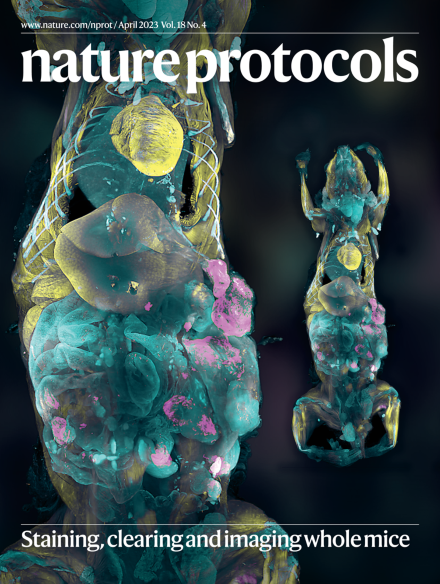生产用于从沙漠空气中收集水的 MOF-303 的高产、绿色和可扩展方法
IF 13.1
1区 生物学
Q1 BIOCHEMICAL RESEARCH METHODS
引用次数: 46
摘要
金属有机框架 (MOF) 是从沙漠空气中收集水的绝佳候选材料。MOF-303(Al(OH)(PZDC),其中 PZDC 为 1-H-吡唑-3,5-二羧酸盐)是一种坚固且对水稳定的 MOF,是一种特别有前途的集水吸附剂,它能在低相对湿度下吸收水分,并在温和加热的条件下释放水分。因此,开发一种简便、高产的合成方法来大规模生产这种吸水剂是非常有必要的。在此,我们报告了克级和公斤级绿色水基制备 MOF-303 的详细方案。具体来说,我们介绍了四种合成方法(溶热法、回流法、容器法和微波法),涉及不同的设备要求,以保证普遍的可操作性。通常情况下,溶热法合成 MOF-303 需要约 24 小时,而回流法和容器法可将时间缩短至 4-8 小时。此外,我们还就 MOF-303 以及一般的集水 MOF 的表征提供了指导,以确保产品在纯度、结晶度、孔隙率和吸水性方面的高质量。此外,为了满足这种材料未来商业化的需要,我们证明了采用我们的方案每批次可生产 3.5 公斤,收率高达 91%。与小规模生产的相应材料相比,大规模合成的 MOF-303 显示出相似的结晶度和吸水能力。我们的合成过程绿色环保,以水为基础,可在数小时内生产出 MOF。MOF-303 是一种很有前景的集水吸附剂,它能在低相对湿度条件下吸水,并在轻度加热条件下释放水分。这种金属有机框架可通过本方案中介绍的四种绿色合成方法在不同规模上制造。本文章由计算机程序翻译,如有差异,请以英文原文为准。

High-yield, green and scalable methods for producing MOF-303 for water harvesting from desert air
Metal–organic frameworks (MOFs) are excellent candidates for water harvesting from desert air. MOF-303 (Al(OH)(PZDC), where PZDC is 1-H-pyrazole-3,5-dicarboxylate), a robust and water-stable MOF, is a particularly promising water-harvesting sorbent that can take up water at low relative humidity and release it under mild heating. Accordingly, development of a facile, high-yield synthesis method for its production at scale is highly desirable. Here we report detailed protocols for the green, water-based preparation of MOF-303 on both gram and kilogram scales. Specifically, four synthetic methods (solvothermal, reflux, vessel and microwave), involving different equipment requirements, are presented to guarantee general accessibility. Typically, the solvothermal method takes ~24 h to synthesize MOF-303, while the reflux and vessel methods can reduce the time to 4–8 h. With the microwave-assisted method, the reaction time can be further reduced to just 5 min. In addition, we provide guidance on the characterization of MOF-303, as well as water-harvesting MOFs in general, to ensure high quality of the product in terms of its purity, crystallinity, porosity and water uptake. Furthermore, to address the need for future commercialization of this material, we demonstrate that our protocol can be employed to produce 3.5 kg per batch with a yield of 91%. MOF-303 synthesized at this large scale shows similar crystallinity and water uptake capacity compared to the respective material produced at a small scale. Our synthetic procedure is green and water-based, and can produce the MOF within hours. MOF-303 is a promising water-harvesting sorbent that can take up water at low relative humidity and release it under mild heating. This metal–organic framework can be made at different scales using the four green synthetic methods described in this protocol.
求助全文
通过发布文献求助,成功后即可免费获取论文全文。
去求助
来源期刊

Nature Protocols
生物-生化研究方法
CiteScore
29.10
自引率
0.70%
发文量
128
审稿时长
4 months
期刊介绍:
Nature Protocols focuses on publishing protocols used to address significant biological and biomedical science research questions, including methods grounded in physics and chemistry with practical applications to biological problems. The journal caters to a primary audience of research scientists and, as such, exclusively publishes protocols with research applications. Protocols primarily aimed at influencing patient management and treatment decisions are not featured.
The specific techniques covered encompass a wide range, including but not limited to: Biochemistry, Cell biology, Cell culture, Chemical modification, Computational biology, Developmental biology, Epigenomics, Genetic analysis, Genetic modification, Genomics, Imaging, Immunology, Isolation, purification, and separation, Lipidomics, Metabolomics, Microbiology, Model organisms, Nanotechnology, Neuroscience, Nucleic-acid-based molecular biology, Pharmacology, Plant biology, Protein analysis, Proteomics, Spectroscopy, Structural biology, Synthetic chemistry, Tissue culture, Toxicology, and Virology.
 求助内容:
求助内容: 应助结果提醒方式:
应助结果提醒方式:


